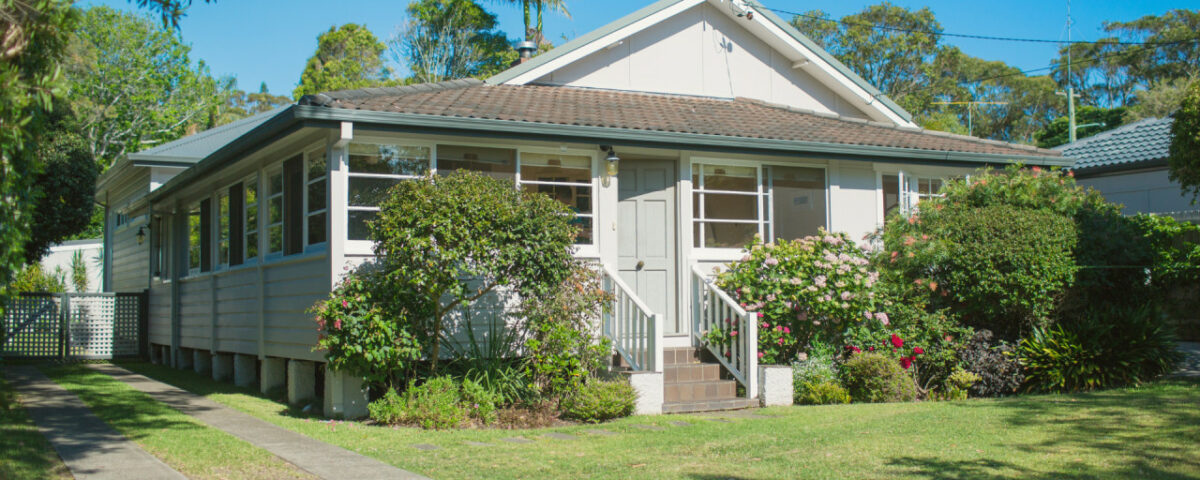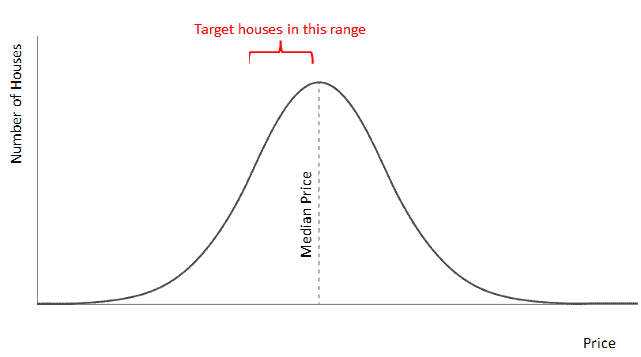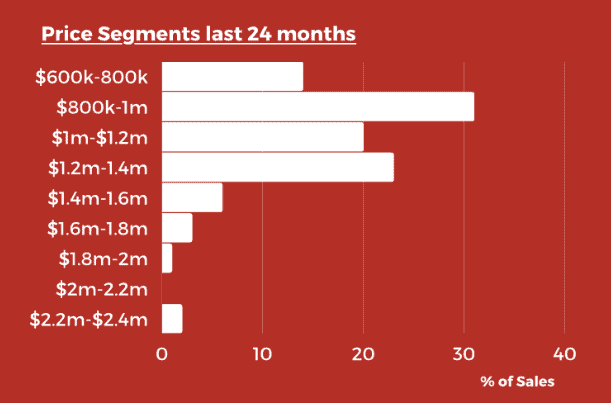- The first step is making the call.
- 1300 022 482
- hello@searchpartyproperty.com.au
Do Cheap Houses Make Better Investments?

Suppose you’ve got $2 million to invest in property.
What would your approach be?
Spend it all on one house? Or split it across a couple?
Have you ever considered how price point can impact a property’s performance?
One House or Many?
Each approach has distinct pros and cons.
Of course, higher prices generally mean superior locations, likely to experience more significant capital growth in the medium to long term – driven by the consistent demand to reside in such locales. Furthermore, prestigious neighbourhoods typically feature a scarcity of investment properties, creating a strong tenant demand. This approach simplifies property management with potential reductions in maintenance costs and the number of leases and tenants to handle. Moreover, higher-value properties may offer negative gearing and tax benefits that high-income investors find advantageous, although this should not be the sole impetus for investment.
Conversely, cheaper properties might enable better risk management through diversification across different markets. The diversification benefit extends to the income stream as well; with multiple properties, an investor can still enjoy income from one house even if the other is temporarily unoccupied, thereby reducing the financial impact that may come from a sole property falling vacant. Essentially, owning two properties can offer a buffer against the ebbs and flows of the rental market, providing a steadier, more reliable income stream in contrast to the ‘all eggs in one basket’ approach of a single, high-value investment.
So, without specifics, it could simply come down to an investor’s tolerance for risk and personally preferred approach.
Median Misconception
But to go a step further, though price point can absolutely impact how well a property performs relative to others within an area, the effect is often misunderstood.
For example, you might’ve heard that it’s a good idea to target properties priced below the local median, like this:

Often, the thinking is that these houses just below an area’s median price are more likely to be ‘dragged up’ by the rest of the market – that they have more room to grow, relative to the greater volume of houses priced at or above the mean. The same goes for houses above the mean, where they are commonly perceived as having less room to grow.
But there just isn’t evidence for this!
While cheaper properties could present enticing development and renovation opportunities, property prices aren’t meaningless, and there could be important reasons for a certain property being less desirable and cheaper. These reasons behind a low price could also be inherent and unfixable, resulting in continued low demand – e.g. proximity to a train line or a main road, small land size, etc.
The assumption that an area’s median affects valuations over time is also untrue. Valuations are based on comparable sales, considering recency, proximity, and similarity. House prices affect median prices, not the other way around. A 10% increase in an area’s median price of course does not necessarily mean that all properties in the area have also risen in value by 10%.
Rental Variance
For investment properties, it’s also important to remember that property value alone doesn’t determine how much a property will rent for. A house worth 50% more doesn’t necessarily bring in 50% more rent. This is because the factors affecting property value can be very different to those affecting rental income. At the extremes, rental yield is also more likely to begin to plateau alongside higher property values, where the cost of owning a property becomes increasingly comparable to renting.
How to consider price when investing?
Despite what we’ve just explored, assessing price points can play an important role in investment research, and price segmentation can be a very useful tool in assessing the quality of an investment opportunity. By price segmentation, we mean a count of prior sales based upon price bands, something like this:

Often, a good approach is to focus on properties that fall within an area’s top 2-3 price bands (a common convention is that each band spans around $200k). The rationale for this is twofold:
1. The presence of more comparable properties in a certain price band can bolster one’s confidence when conducting research and making investment decisions. Opting for properties within the price brackets where sales volumes are highest ensures a wealth of comparative data, enabling a more informed and secure transaction.
2. The volume of sales within a price segment can, to some degree, indicate how desirable these properties are to potential buyers. By investing in the most popular categories, you’re likely acquiring a property with a higher baseline level of demand, which may translate to greater competition among buyers when it’s time to sell.
This is not to suggest that properties beyond these ranges won’t ever make for excellent investments. However, the lack of comparables introduces an added level of uncertainty.
Ultimately, both capital growth potential and rental yield are shaped by a myriad of factors. Evidence and case studies have shown that comparing a property’s price to the local median alone will generally fall short of providing a comprehensive picture of its growth potential. A detailed analysis of the local market and the specific property is always crucial before finalising any investment, and an emphasis upon high-volume price segments can assist greatly in making confident decisions.
Want to discuss this further?
For expert guidance in property strategy, and what it could mean for you as a property investor, book in for a free consultation to make informed decisions, tailored to your investment goals. Don’t let affordability challenges hinder your success. Act now with Search Party Property!




